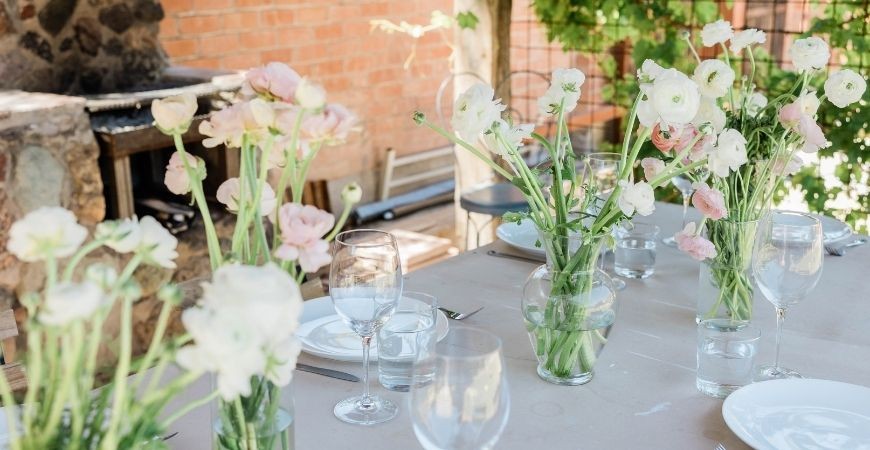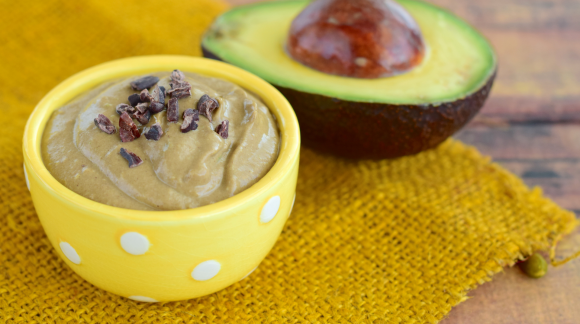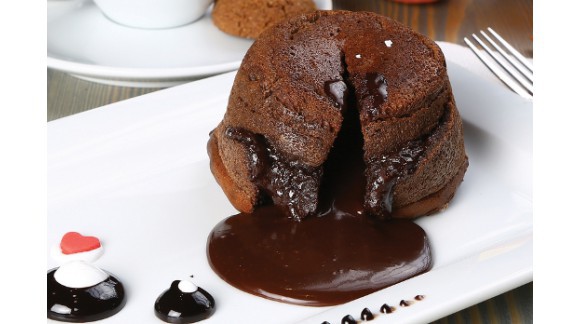And what if we celebrated Easter differently? From springtime brunch to chocolate pleasures: a guide to savoring Easter...
Easter, today, is no longer just a holiday with historical or symbolic connotations. It has largely transformed into an indispensable cultural event, celebrated through various regional traditions, a strong family anchor, and gourmet rituals that mark the return of spring. It is notably the Easter brunch that crystallizes this evolution: a moment of sharing where we come together to savor the first fruits and vegetables of the season, in a convivial and festive atmosphere.
Between savory dishes and chocolate delicacies, this midday meal reflects both an attachment to local customs and a growing desire to reinvent practices: revisited recipes, choice of more qualitative ingredients, valorization of seasonal products... The Easter brunch becomes a new way to celebrate the flavors of spring with creativity and awareness, without, however, renouncing pleasure.
It is also a unique opportunity to introduce children and loved ones to regional culinary traditions, simple but tasty foods, new textures, and colorful diversity that highlights the arrival of the good weather. In some regions, specialties rooted in local heritage are always honored - braided breads, artisanal pastries, preparations based on eggs, asparagus or fresh vegetables - but with a modern touch in the presentation, combinations, or cooking methods.
This article invites you to explore several ideas around this key moment: how to create a brunch that is both generous, balanced, and seasonal? What to think of the place of chocolate? How to reconcile the desires of both young and old? And most importantly, after the festivities, what simple solutions can be adopted to support digestion, energy and balance? Concrete ideas, advice, and products to discover to make Easter a moment as joyful as it is harmonious.
Spring renewal: seasonal foods and transition on the plate
The Easter brunch comes at a pivotal moment of the year. Spring is slowly settling in, temperatures are rising, the days are getting longer, and our bodies are starting to wake up from their winter slumber. This transition period also marks a dietary turning point, where our needs evolve, our desires change, and the available products become richer in diversity and freshness.
In our latitudes, between Switzerland, France and more broadly Southern Europe, the month of April opens the door to a whole new palette of ingredients. We see the reappearance of the first asparagus - white and green -, crunchy radishes, young spinach shoots, new carrots and even fresh broad beans. Aromatic herbs make their comeback, such as chives, mint, or flat parsley. On the sweet side, rhubarb brings its tart vivacity, as do the first local strawberries in certain sun-drenched regions. These foods are not only a promise of taste, they are also a significant source of vitamins, minerals, and fibers that allow our bodies to regain lightness and vitality after winter.
This natural renewal is often accompanied by a change of pace. With longer days, milder weather, and an increase in energy, physical activity picks up: we walk more, go out more, move better. This also means that our nutritional needs adjust: we feel less the need for rich and comforting dishes, and more the need for a nutritious, invigorating and colourful diet. It's a perfect opportunity to rethink our meals, not by strictly lightening them, but by rebalancing them. Crunchy vegetables can replace the too heavy side dishes, lean proteins like eggs, fish or legumes take over the meats in sauce, and whole grains provide energy and satiety without overloading.
Putting together an Easter brunch at this time, therefore, is also about playing with this transition: incorporating warm or cold dishes based on spring vegetables into your buffet, offering savory pies with fresh herbs, vitamin-rich bowls, homemade vegetable juices, or even hard-boiled eggs marinated with colorful pickles. The idea is not to revolutionize habits, but to subtly adapt our plates to the season, always with the same guiding principles: pleasure, vitality and balance.
Creating a tasty, colorful and balanced brunch: when pleasure and awareness meet.
A successful Easter brunch isn't just a series of dishes. It is an experience, a balance between textures, colors, flavors, and sensations. Instead of talking about "salty" or "sweet" dishes, we prefer here to explore two major gourmet spheres: that of invigorating freshness and that of comforting sweetness. This more sensory approach allows the construction of the brunch to be guided while respecting the diversity of tastes and avoiding excesses. After all, 80% common sense and 20% fun is often the best equation.
The invigorating freshness is built around crunchy, slightly tangy or aromatic elements: hard-boiled or poached eggs accompanied by fresh herbs (chives, tarragon, dill), pickled spring vegetables, spreads with chickpeas or beans, homemade seed crackers, fresh cheeses, small crunchy salads (arugula, radishes, young shoots). We add seasonal vegetable pies, light wraps, or legume patties to this. The key here is the variety of textures, the balance between proteins, fibers and good fats - all presented in a friendly manner.
On the side of comforting sweetness, we play with seasonal fruits (rhubarb, apples, pears, local strawberries at the start of the season), preparations based on almond or hazelnut puree, wholemeal flour breads, lightly spiced homemade compotes, or even spelt pancakes garnished with roasted fruits or a square of melted dark chocolate. There's no need for excessive added sugars: slow cooking, spices (cinnamon, vanilla, cardamom) and ripe fruits already provide all the expected taste richness.
And what about the drinks? Too often relegated to the background, they deserve a real place in the balance of brunch. Delicate green teas, detox infusions based on rosemary or fennel, or lemon-ginger herbal teas offer a nice balance after a generous plate. For enthusiasts, a good coffee can obviously have its place - the important thing is to accompany it with sufficient hydration. And why not also offer a homemade infused water, with a few slices of cucumber, mint leaves and lemon for a refreshing touch ?
Building your ideal brunch can become a game of assembly. : We can imagine a "plate to compose" with five playful elements :
- A basic element : whole grain bread, vegetable patty, crackers, or small portion of cereals (quinoa, bulgur)
- A source of protein : eggs, fresh cheese, hummus or lemon lentils
- A seasonal vegetable : raw, grilled or marinated, for color and vitality
- A seasonal fruit : in pieces, stewed or lightly roasted
- A small pleasure twist : square of dark chocolate, homemade jam, natural almond paste
This structure allows both adults and children to create their own plate, playing on visual and taste harmony. This encourages a form of dietary autonomy, while stimulating curiosity and pleasure.
By integrating this approach, brunch becomes much more than just a meal: it's a moment of sharing, creativity, listening to oneself... where each bite celebrates the season and conviviality. And as always, there's no need to be perfect — the goal is to savor, not to calculate.
Easter chocolate: between indulgence, awareness and quality
One cannot mention spring celebrations without addressing chocolate, this Easter staple that awakens childhood memories and invites indulgence, regardless of age. Much more than a simple guilty pleasure, chocolate holds a unique place in our contemporary food culture. A millennia-old product, long reserved for the elite, it has become democratized over time... to the point of becoming a universal symbol of accessible pleasure. But behind this apparent universality, lies a much more complex reality today.
The cocoa production sectors are currently under pressure. Climate change, scarcity of resources, aging plantations and increased global demand - particularly in emerging countries of Asia and Latin America - have turned cocoa into an increasingly costly commodity, but also rarer and more fragile. This tension is reflected in the price, but it should also push us to rethink our way of consuming chocolate. Because at the end of the day, this raw material is precious. It deserves to be valued, respected, elevated.
Choosing good chocolate is already a step towards more responsible consumption. : Favoring local artisan chocolatiers, committed to quality, traceability, and respect for the product, is not only a supportive action towards craftsmanship, but also a fairer, more sustainable choice. A chocolatier worthy of the name works his material to bring out the flavors, reduce unnecessary additives, control the amounts of sugar - and restore all its nobility to this delicacy.
And what about the quantity ?
The question here is not about feeling guilty or imposing rigid limits, but rather about encouraging a form of gentle awareness. Chocolate, enjoyed with pleasure, is part of a balanced diet. What matters is avoiding the tipping point: moving from indulgence (controlled pleasure) to excess (automatic or unbalanced consumption).
Some landmarks can help:
- Please provide the text that you wish to be translated from French to English. Prioritize small formats : miniature eggs, individual squares or bites allow for fractional consumption, which is easier to moderate.
- Please provide the text that you wish to be translated from French to English. Choosing high cocoa content chocolates (minimum 70%): richer in antioxidants, more aromatic, they satisfy more quickly and contain less added sugar.
- Please provide the text that you wish to be translated from French to English. Bet on the diversity of textures The crunchy dark chocolate, the melting ganache, or even the inclusions of dried fruits or spices stimulate the senses and enhance the feeling of satisfaction with less quantity.
- Please provide the text that you wish to be translated from French to English. Avoid "giant industrial" formats that promote overconsumption and often contain poor quality oils, artificial flavors or unnecessary additives.
And for those who wish to propose alternatives — especially for children — there are simple and fun ideas: small treasure hunts with wooden eggs, surprises hidden in glass jars, mini local craft gifts or homemade treats such as raw cacao energy balls, organic fruit pastes or homemade cereal bars with chunks of dark chocolate. All of this can perfectly fit into the magic of the celebration while reducing the amount of industrial chocolate consumed.
Finally, it's not the chocolate itself that is the problem, but the approach we have towards it.. By prioritizing quality over quantity, supporting local supply chains and craftsmen, and incorporating a level of awareness into our indulgence, we transform Easter chocolate into a sensory, social, and even environmental celebration.
Reimagining the egg hunt: making Easter fun, creative, and responsible
If the egg hunt remains a must during the Easter weekend for the youngest, it can also become much more than a simple frenzied race for chocolate. It is the perfect opportunity to create a fun, creative and meaningful moment. By putting a little imagination back into this tradition, we can combine pleasure, sensory awakening, respect for the environment, and unforgettable family memories.
Why not create a multi-dimensional treasure hunt ? In addition to the classic chocolate eggs, you can include:
- Please provide the text that you wish to be translated from French to English. Small durable objects : wooden figurines, mini puzzles, marbles, colorful strings, small stories printed on recycled paper, etc.
- Please provide the text that you wish to be translated from French to English. Seeds to sow : of wildflowers, sunflowers, or herbs to plant in the garden or on the balcony, accompanied by small hand-decorated sachets or biodegradable pots.
- Please provide the text that you wish to be translated from French to English. Elements for a mini botanical workshop : small pots, mini bags of potting soil, wooden labels to plant with the names of the plants, or even ink stamps to decorate the containers.
Once all the elements have been discovered, the activity continues with a "post-brunch gardening workshop": the children fill their pots, sow the seeds, decorate their labels... A quiet and hands-on moment that links the hunt, nature, and creativity.
We can even imagine a mapping of the garden or from home, with clues or puzzles to solve at each step. This stimulates logic, imagination, and the desire to cooperate among children, without giving in to the overconsumption of sweets.
And if we still want to keep chocolate at the heart of the experience, nothing prevents planning for a few quality pieces at the end of the hunt - but always associating them with an effort to research, discover or create. This enhances the pleasure while avoiding excesses.
Finally, "Easter can also be an opportunity to build local connections": why not organize a trip to a chocolate maker's workshop, if one of them offers tours? Many artisans agree to open their doors during this period, allowing both children and adults to discover the secrets of manufacturing, to associate a face with the product, and to better understand where the chocolate they taste comes from. We then transform a simple purchase into an educational and sensory experience.
Let's conclude with a simple idea An egg hunt does not need to be filled with plastic or excessive sugar to be magical. It only needs a bit of meaning, a touch of creativity, and a large dose of sharing.
Finding balance after festivities: 3 allies to support the body
Extended weekend, holidays, reunions around richer meals... The Easter period is often synonymous with shared pleasures, but sometimes also with a bit of overload. Without guilt, it might be interesting to support your body through this post-party phase with simple and natural actions. Here is our top 3 supplements to be favored after Easter to gently reset the counters to zero.
✔ PRO-B Probiotics - The microbiota in the spotlight
A sluggish digestion, bloating or temporary fatigue are often the first signs of an intestinal imbalance. After several hearty or irregular meals, our intestinal flora can be severely tested. PRO-B probiotics from BN Nutrition provide a cocktail of 48 billion living microorganisms, selected for their effectiveness. They help to restore the balance of the microbiota, support digestion, and strengthen natural defenses. A post-holiday course is ideal for starting off on a good foundation.
✔ Turmeric juice with black pepper - The natural anti-inflammatory support
Digestive fatigue, muscular stiffness, decrease in energy... So many small signals often amplified after excesses or a less stable lifestyle. turmeric juice, rich in bioavailable curcumin, is recognized for its properties natural anti-inflammatories. It is an excellent ally to boost digestive functions, soothe bodily tensions, and restore energy. To be consumed fresh, alone or diluted, it fits perfectly into a routine of returning to balance.
✔ Pu'erh Tea - The millennial infusion that drains and rebalances
Originally from Yunnan, China, Pu'erh tea (or Pu-erh) is a fermented tea with draining and digestive properties Powerful. Unlike traditional green tea, it benefits from a long fermentation process that develops its mild tannins and its ability to support the liver, digestion, and fat elimination. It is often used to regulate metabolism after overeating. To be consumed in the morning or after meals, it's an ideal alternative to regular herbal teas. Its deep, woody flavor also makes it a truly sensory experience.
These three natural solutions allow to initiate a gradual return to a lighter diet, without frustration, while respecting the rhythm of your body. Whether it's to deflate a tense belly, restart transit or regain more stable energy, these allies work in synergy with a colorful, vibrant diet that is in sync with the season.
Conclusion: Easter, a celebration to fully savor, consciously
Easter, beyond its symbols and treats, is a time of shared joy, family reunions, and culinary creativity. The brunch here becomes a playground of expression, mixing gustatory pleasure, seasonality and balance, in a friendly and light atmosphere. This moment also marks a turning point: the transition to a brighter, more active season, where our bodies demand renewed, adapted, and conscious energy.
Celebrating does not mean giving in to carelessness. On the contrary, it can be a precious opportunity to reconcile pleasure and health. By promoting local products, short supply chains, responsible creativity (even in egg hunts), and a selection of targeted and high quality supplements, everyone can navigate this celebration with more lightness... and less guilt.
Perhaps that's the most important thing: enjoy fully, with full awareness, of what this period has to offer. And if a few excesses sneak onto the plate, so much the better. The body is designed to adapt, and the key lies mainly in how we bounce back, gently, after the festivities.
So, whether it's around a refined brunch, a reimagined egg hunt, or a shared moment of calm over a Pu'erh tea... savor Easter in your own way. And if needed, we are always here to support you towards a sustainable balance.






